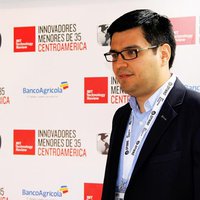Internet & web
Shyam Gollakota
An expert on wireless technology figures out how to power devices without batteries.
Portrait by Jose Mandojana

Latin America
Antonio Navas
His free language learning platform enables the creation of new collaborative courses

Latin America
Lorrana Scarpioni
She has created a social network for time exchange through the trading of experiences and skills

Latin America
Tomás Escobar
His educational platform offers continuous training for the professions of today and those of the future

Europe
Sergio Álvarez
Tools that hide big data
